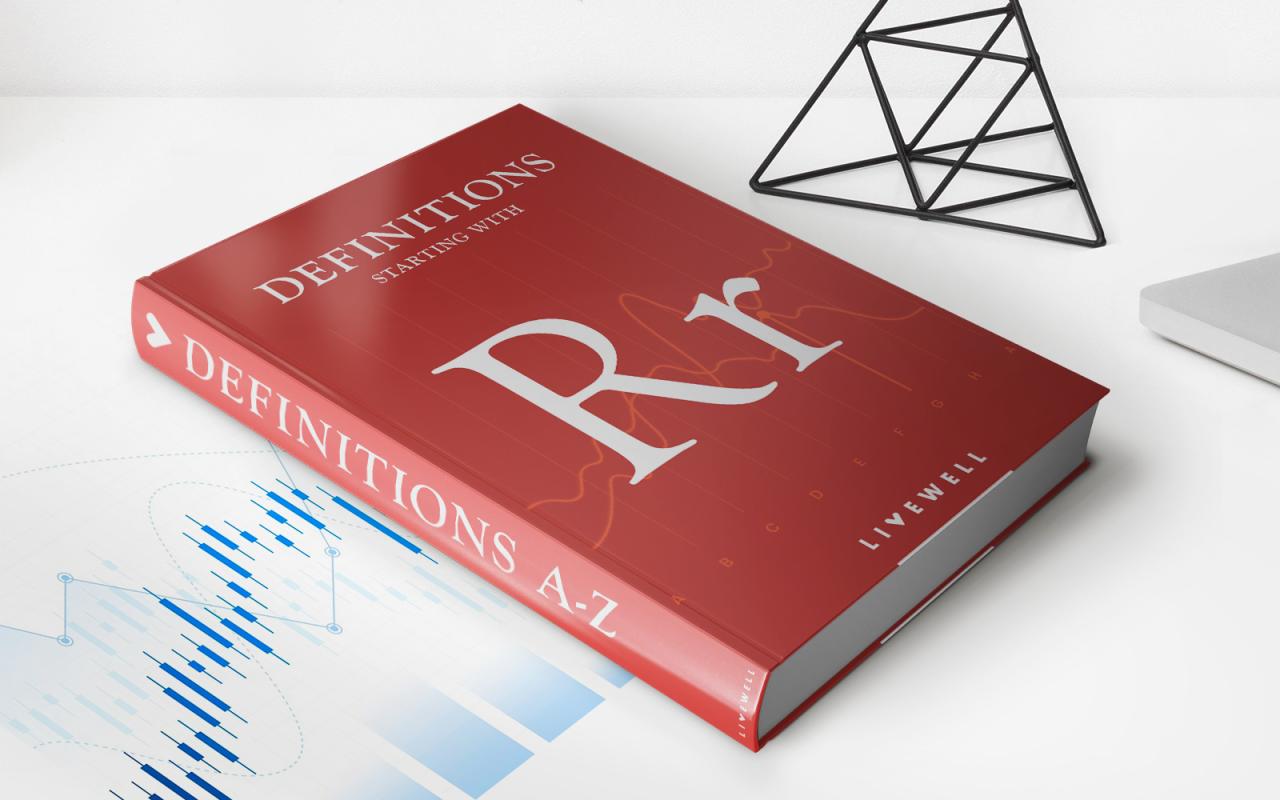In the world of insurance, where risk mitigation and financial security intertwine, a unique and often overlooked model stands apart: reciprocal insurance. This alternative risk-sharing mechanism, where members pool their resources to protect themselves against common perils, offers a compelling alternative to traditional insurance companies. While the concept might seem novel to some, reciprocal insurance has a rich history, dating back to the early days of maritime trade.
Unlike traditional insurance, where policyholders pay premiums to a company that assumes the risk, reciprocal insurance operates through a network of subscribers who agree to share the risk amongst themselves. This collective approach fosters a sense of shared responsibility and empowers members to directly influence their insurance experience.
What is Reciprocal Insurance?

Reciprocal insurance is a unique form of insurance where policyholders act as both the insurer and the insured. In this model, members of a group contribute premiums to a common fund, and they share the risk of losses among themselves. This differs from traditional insurance models, where a commercial insurance company underwrites policies and manages the risk.
Differences from Traditional Insurance
Reciprocal insurance stands apart from traditional insurance in several key ways:
- Ownership and Management: In reciprocal insurance, the policyholders own and manage the company through an elected board of directors. This structure allows for greater control over premium rates, claims handling, and other aspects of the insurance process.
- Risk Sharing: Instead of relying on a commercial insurer, policyholders in a reciprocal exchange share the risk of losses among themselves. This can lead to lower premiums and greater financial stability, as members are directly invested in the success of the exchange.
- Governance: Reciprocal insurance exchanges are typically governed by state laws and are subject to regulatory oversight. However, they often have a more flexible structure than traditional insurance companies, allowing for greater customization and innovation in product offerings.
Real-World Applications of Reciprocal Insurance
Reciprocal insurance has a long history and is used in a variety of industries. Some common examples include:
- Professional Liability Insurance: Many professional groups, such as doctors, lawyers, and accountants, utilize reciprocal insurance to protect themselves against malpractice claims.
- Workers’ Compensation Insurance: Some states allow employers to form reciprocal insurance exchanges to provide workers’ compensation coverage for their employees.
- Property and Casualty Insurance: Reciprocal insurance is also used to provide coverage for property and casualty risks, such as homeowners insurance, auto insurance, and commercial insurance.
How Reciprocal Insurance Works
Reciprocal insurance operates differently from traditional insurance models. Instead of relying on a single insurance company, it involves a group of individuals or entities, known as subscribers, who agree to share the risks and responsibilities of insurance. This unique structure, often referred to as a reciprocal exchange, allows members to pool their resources and provide coverage for one another.
Structure of a Reciprocal Insurance Exchange
A reciprocal insurance exchange is characterized by its unique structure, which differs from traditional insurance companies. The exchange functions as a platform where subscribers, who are also policyholders, agree to share risks and responsibilities. Here are the key components of this structure:
- Subscribers: The core of a reciprocal exchange are the subscribers, who are also the policyholders. They contribute premiums and share in the profits or losses of the exchange.
- Attorney-in-Fact: This entity acts as the administrator and manager of the exchange. It is responsible for handling day-to-day operations, underwriting, and claims management. The attorney-in-fact is typically a separate legal entity from the exchange itself.
- Managing Agent: The managing agent, often a separate entity from the attorney-in-fact, provides administrative support to the exchange. They may handle tasks such as policy issuance, billing, and customer service.
Roles of Subscribers, Attorney-in-Fact, and Managing Agent
Each entity within a reciprocal exchange plays a crucial role in its operation.
- Subscribers: Subscribers are the heart of the exchange. They share in the risks and rewards of the exchange by contributing premiums and voting on key decisions. They also have the right to participate in the exchange’s profits, which are typically distributed as dividends or credits.
- Attorney-in-Fact: This entity acts as the central authority of the exchange, overseeing all aspects of its operation. It is responsible for:
- Underwriting and risk assessment
- Setting premium rates
- Managing claims
- Investing surplus funds
- Ensuring compliance with regulatory requirements
- Managing Agent: This entity provides administrative support to the exchange, helping to streamline its operations. Its responsibilities may include:
- Issuing policies
- Billing subscribers
- Providing customer service
- Handling claims processing
Underwriting and Risk Assessment
Reciprocal insurance exchanges employ a rigorous underwriting process to assess the risks associated with potential subscribers. This process is similar to that of traditional insurance companies but with a focus on the collective risk of the exchange’s members.
- Risk Assessment: The attorney-in-fact conducts a thorough analysis of each applicant’s risk profile, considering factors such as their industry, financial stability, and past claims history. The aim is to ensure that the applicant’s risks are compatible with the overall risk profile of the exchange.
- Underwriting Criteria: The attorney-in-fact uses specific criteria to determine whether to accept an applicant. These criteria may vary depending on the type of coverage offered by the exchange, but typically include factors such as:
- Financial stability: The applicant’s financial strength and ability to pay premiums
- Loss history: The applicant’s past claims experience
- Risk management practices: The applicant’s measures to mitigate potential losses
- Pricing: Based on the risk assessment, the attorney-in-fact sets premium rates for each subscriber. These rates reflect the individual risk profile of the subscriber and the overall risk pool of the exchange.
Advantages of Reciprocal Insurance

Reciprocal insurance offers several advantages over traditional insurance models, making it an attractive option for businesses and individuals seeking cost-effective and flexible coverage. This type of insurance structure allows subscribers to directly share the risks and rewards of their insurance pool, leading to potential cost savings and greater control over their insurance program.
Potential Cost Savings
Reciprocal insurance can offer lower premiums compared to traditional insurance models due to the absence of profit-seeking intermediaries like insurance companies. The lack of administrative overhead and the focus on risk management within the subscriber pool can result in more efficient operations and potentially lower premiums.
For example, a group of businesses with similar risk profiles could form a reciprocal insurance exchange to share their risks and collectively manage their insurance needs. This structure eliminates the need for a traditional insurance company to profit from the premiums, leading to potentially lower premiums for the participating businesses.
Flexible Coverage Options
Reciprocal insurance exchanges can offer more tailored coverage options compared to standardized insurance policies offered by traditional insurers. The flexibility stems from the collaborative nature of reciprocal insurance, allowing subscribers to customize their coverage to meet their specific needs and risk profiles.
For instance, a group of businesses operating in a specific industry might form a reciprocal exchange to address the unique risks associated with their industry. This allows them to develop customized insurance policies that cater to their specific needs, providing greater coverage and flexibility compared to standardized insurance policies.
Disadvantages of Reciprocal Insurance
While reciprocal insurance offers unique advantages, it’s crucial to understand its potential drawbacks. These disadvantages can be significant and should be carefully considered before choosing this type of insurance.
Potential Risks Associated with Reciprocal Insurance
Reciprocal insurance, due to its structure, carries specific risks that traditional insurance companies may not face.
- Exposure to Catastrophic Losses: Reciprocal exchanges are vulnerable to large-scale claims arising from catastrophic events like natural disasters or pandemics. These events can deplete the exchange’s surplus and threaten its financial stability.
- Member Default: If a member of a reciprocal exchange defaults on their premium payments, the remaining members may be required to cover the shortfall. This can lead to financial strain for other members, especially if multiple defaults occur.
- Lack of Diversification: Unlike traditional insurance companies that diversify their risk across various policies, reciprocal exchanges are typically focused on a specific industry or group of members. This lack of diversification can make them more susceptible to economic downturns or industry-specific shocks.
Challenges in Accessing Capital and Managing Claims
The unique structure of reciprocal insurance can pose challenges in accessing capital and managing claims.
- Limited Access to Capital: Reciprocal exchanges typically rely on member contributions for their capital. This can make it difficult to raise funds quickly to cover large claims or expand operations.
- Claim Management Complexity: Managing claims in a reciprocal exchange can be more complex than in a traditional insurance company. Members may have different levels of risk tolerance and may be more inclined to dispute claims.
Regulatory Environment and Potential Limitations
Reciprocal insurance operates under a specific regulatory environment, which can pose certain limitations.
- Stricter Regulation: Reciprocal exchanges are often subject to stricter regulatory oversight than traditional insurance companies. This can lead to higher compliance costs and administrative burdens.
- Limited Availability: Reciprocal insurance is not widely available in all jurisdictions. This can limit the options for individuals or businesses seeking this type of coverage.
- Potential for Solvency Issues: The financial stability of a reciprocal exchange depends heavily on the financial strength of its members. If a significant number of members experience financial difficulties, the exchange’s solvency could be threatened.
Types of Reciprocal Insurance

Reciprocal insurance is a unique type of insurance that operates differently from traditional insurance companies. Unlike traditional insurance companies, where policyholders pay premiums to a central entity that assumes risk, reciprocal insurance operates through an exchange of risk among members. These members, also known as subscribers, contribute to a common fund and share the risk of losses among themselves. Reciprocal insurance can be categorized based on its coverage or industry focus, providing diverse options for various insurance needs.
Property and Casualty Insurance
Reciprocal insurance is widely used in the property and casualty insurance market, offering coverage for a wide range of risks.
These exchanges offer coverage for various risks, including:
- Property insurance: This type of coverage protects against damage to property from various perils such as fire, theft, natural disasters, and vandalism. Examples of property insurance programs include commercial property insurance, homeowners insurance, and renters insurance.
- Casualty insurance: This coverage protects against financial losses arising from liability for injuries or damages caused to others. Examples include general liability insurance, workers’ compensation insurance, and automobile insurance.
Professional Liability Insurance
Reciprocal insurance plays a significant role in providing professional liability insurance, commonly known as errors and omissions (E&O) insurance.
This type of coverage protects professionals from financial losses arising from negligence, mistakes, or errors in their professional services.
- Medical malpractice insurance: This coverage protects healthcare professionals, such as doctors, nurses, and hospitals, from financial losses arising from medical negligence claims. Examples include medical malpractice insurance for physicians, nurses, and hospitals.
- Legal malpractice insurance: This coverage protects lawyers and law firms from financial losses arising from negligence or errors in legal services. Examples include legal malpractice insurance for attorneys and law firms.
- Accountant’s professional liability insurance: This coverage protects accountants and accounting firms from financial losses arising from negligence or errors in accounting services. Examples include accountant’s professional liability insurance for certified public accountants (CPAs) and accounting firms.
Specialty Insurance
Reciprocal insurance exchanges also offer coverage for specific industries or niche markets, catering to unique insurance needs.
- Workers’ compensation insurance: This type of coverage protects employers from financial losses arising from workplace injuries or illnesses. Examples include workers’ compensation insurance for construction companies, manufacturing companies, and healthcare providers.
- Commercial auto insurance: This coverage protects businesses from financial losses arising from accidents involving company vehicles. Examples include commercial auto insurance for trucking companies, delivery services, and taxi companies.
- Cybersecurity insurance: This coverage protects businesses from financial losses arising from cyberattacks, data breaches, and other cyber risks. Examples include cybersecurity insurance for financial institutions, technology companies, and healthcare providers.
Examples of Reciprocal Insurance in Action
Reciprocal insurance, with its unique structure and collaborative approach, has proven its effectiveness in various sectors. These examples showcase successful programs, highlighting the challenges they faced and the positive impact they had on subscribers and the industry.
Successful Examples of Reciprocal Insurance
Here are several examples of successful reciprocal insurance programs:
- The Farmers Insurance Exchange: Founded in 1928, Farmers is one of the largest and most successful reciprocal insurers in the United States. It operates in various states, offering a wide range of insurance products, including auto, home, and business insurance. The Farmers Exchange has a long history of financial stability and customer satisfaction.
- The American Automobile Association (AAA): AAA is a well-known organization offering a wide range of services, including insurance. AAA operates as a reciprocal insurer in many states, providing auto insurance and other products. AAA’s reciprocal structure allows it to offer competitive rates and excellent customer service.
- The United States Liability Insurance Company (USLIC): USLIC is a reciprocal insurer specializing in commercial insurance, particularly in the construction and manufacturing industries. It has a strong reputation for providing specialized coverage and risk management services.
Challenges Faced and Solutions
Reciprocal insurers often face unique challenges, including:
- Capitalization: Reciprocal insurers rely on member contributions to build their capital base. This can be a challenge, especially for new or smaller reciprocals. However, many programs have successfully overcome this challenge by attracting members with strong financial resources or through partnerships with other organizations.
- Governance: Reciprocal insurers are governed by their members. This can sometimes lead to challenges in decision-making, particularly if there are differing opinions among members. Many reciprocals have implemented strong governance structures and transparent communication channels to ensure efficient decision-making and member satisfaction.
- Competition: Reciprocal insurers compete with traditional insurance companies, which often have greater resources and market reach. To overcome this challenge, many reciprocals have focused on niche markets or specific industry segments, offering specialized products and services that meet the unique needs of their members.
Impact on Subscribers and the Industry
Reciprocal insurance has had a significant impact on subscribers and the industry as a whole:
- Lower Premiums: Reciprocal insurers often offer lower premiums than traditional insurers, as members share in the profits and are not subject to the same profit margins. This can be a significant benefit for subscribers, particularly for small businesses or individuals who are looking for cost-effective insurance solutions.
- Enhanced Customer Service: Reciprocal insurers often prioritize customer service, as members are also the owners of the company. This can lead to more personalized service and a greater focus on meeting the individual needs of subscribers.
- Innovation: Reciprocal insurers are often more innovative than traditional insurers, as they are not bound by the same bureaucratic structures. This can lead to the development of new products and services that meet the evolving needs of the market.
The Future of Reciprocal Insurance
Reciprocal insurance, with its unique structure and emphasis on shared risk and community, is poised for a future marked by both challenges and opportunities. The industry is undergoing a transformation driven by technological advancements, evolving customer expectations, and a changing regulatory landscape. This transformation presents reciprocal insurers with the chance to adapt, innovate, and thrive in a dynamic insurance market.
Emerging Trends and Innovations
The reciprocal insurance market is experiencing a wave of innovation, driven by technological advancements and changing customer needs. Here are some key trends:
- Digital Transformation: Reciprocal insurers are embracing digital technologies to streamline operations, enhance customer experiences, and improve risk assessment. This includes leveraging artificial intelligence (AI) for claims processing, using blockchain for secure data management, and implementing online platforms for policy management and communication.
- Data Analytics: Reciprocal insurers are increasingly using data analytics to gain insights into risk profiles, predict claims, and personalize insurance offerings. This data-driven approach allows them to better understand their members and offer more tailored solutions.
- Focus on Sustainability: Reciprocal insurers are recognizing the growing importance of sustainability and are developing products and services that support environmental and social responsibility. This includes offering green insurance products, promoting risk management practices that reduce environmental impact, and supporting community initiatives.
Technological Advancements and Their Impact
Technological advancements are transforming the reciprocal insurance model, offering both opportunities and challenges:
- AI and Machine Learning: AI and machine learning are enabling reciprocal insurers to automate tasks, improve risk assessment, and enhance claims processing. For example, AI-powered chatbots can provide 24/7 customer support, while machine learning algorithms can analyze large datasets to identify potential fraud or predict claims.
- Blockchain: Blockchain technology can enhance security and transparency in reciprocal insurance. It can be used to create a secure and immutable record of transactions, ensuring that data is tamper-proof and readily accessible. This can improve trust among members and enhance the efficiency of claims processing.
- Internet of Things (IoT): IoT devices can provide real-time data on risk factors, enabling reciprocal insurers to offer more accurate and personalized insurance products. For example, telematics devices in vehicles can monitor driving behavior and provide discounts for safe driving.
Future Prospects for Reciprocal Insurance
Reciprocal insurance is well-positioned to thrive in a rapidly changing insurance landscape:
- Strong Community Focus: Reciprocal insurers’ emphasis on community and shared responsibility resonates with consumers who value transparency and personalized service. This focus on community can foster loyalty and build trust, giving reciprocal insurers a competitive advantage.
- Innovation and Agility: Reciprocal insurers are known for their agility and willingness to innovate. Their decentralized structure and member-centric approach allow them to quickly adapt to changing market conditions and introduce new products and services.
- Sustainability Leadership: Reciprocal insurers have the potential to become leaders in sustainability by developing products and services that support environmental and social responsibility. This aligns with growing consumer demand for sustainable insurance solutions and can attract a new generation of members.
Wrap-Up

Reciprocal insurance presents a compelling alternative for those seeking greater control and potentially lower costs in their risk management strategies. While not without its own set of challenges, the model’s inherent flexibility and collaborative nature make it an intriguing option for specific industries and risk profiles. As the insurance landscape continues to evolve, reciprocal insurance is poised to play an increasingly significant role in shaping the future of risk management.

